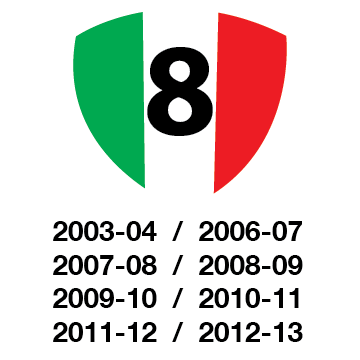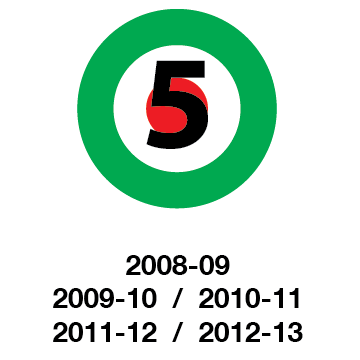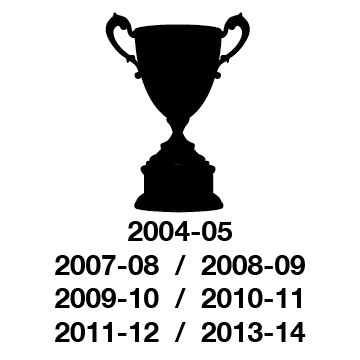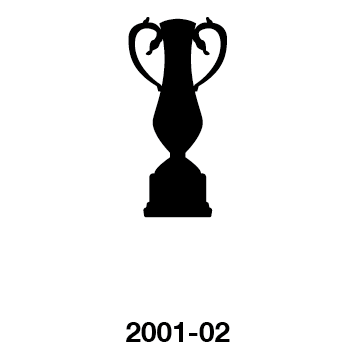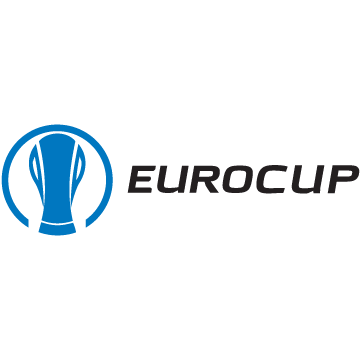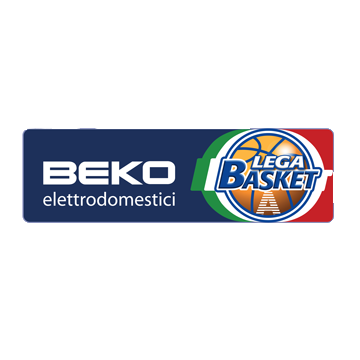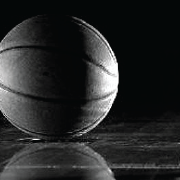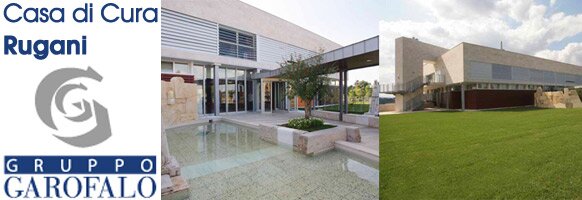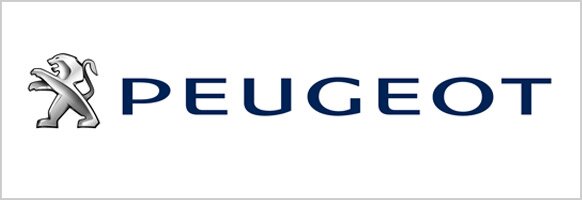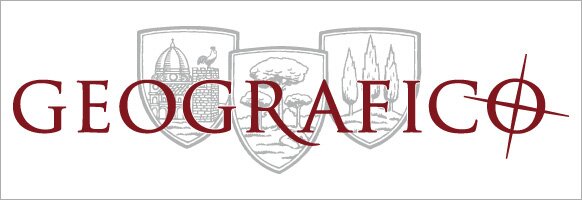Hall of Fame
Season: 2012 – 2013
Montepaschi kicks off a new project. With Simone Pianigiani gone for Turkey, the Viale Sclavo club begins again with Luca Banchi, his assistant since 2006, and a nucleus of players composed of Marco Carraretto, Tomas Ress, David Moss and Luca Lechthaler. There are a lot of departures from the Palio City, starting with Shaun Stonerook, who definitively leaves played basketball and hands the title of captain over to Marco Carraretto. David Andersen and Bo McCalebb follow Pianigiani to Fenerbahce. Rimas Kaukenas and Ksistof Lavrinovic return home to Zalgiris Kaunas, Nikos Zisis switches to Bilbao, Jonas Maciulis to Athens, Andrea Michelori returns to Caserta, Pietro Aradori chooses Cantù and Bootsy Thornton opts for Sassari. Coming in as vice coach to back Banchi up is Marco Crespi, while Alessandro Magro remaons the only assistant coach. New entries on Montepaschi’s roster are point guard and ex Oldenburg athele Bobby Brown, Serbian Nationals point guard Aleksandar Rasic, ex Virtus Bologna player VIktor Sanikidze, ex Casale athlete Matt Janning and Daniel Hackett directnly from Pesaro. Benjamin Eze comes back to wear green-and-white, while Estonian, Kristjan Kangur, returns from being on loan to Varese. With the season already underway, Montepaschi brings in Benjamin Ortner to fill in while Eze is injured, and Dionte Christmas as an injury insurance policy for the playoffs given the tough season physically numerous players had.
SUPERCOPPA. The season’s first event is the Supercoppa Italiana, which is once again against Pallacanestro Cantù. But this time the script is different and it’s not the green-and-whites to who triumph in Rimini, but the team from Brianza. Cantù wins the game 73-80 and raises the cup.
REGULAR SEASON. The Italian Championship’s regular season begins on day two because of the NBA tournament that put Montepaschi on court at the San Antonio Spurs and the Clevaland Cavaliers. Round one begins with a 92-65 win over Enel Brindisi, but sees the green-and-whites fall four times: in Varese and Sassari, the regular season kings, and against Milano and Venezia. Montepaschi’s second round is an uphill battle, complicated by numerous injuries including Ress (calf) and Hackett (achilles tendon), two men key to the green-and-whites’ season, and their double battle in the championship and Euroleague. Montepaschi finishes in fifth place, with eight losses and seven win the second round. Thus, they have to face the entire playoff season without being able to count on a home court advantage.
COPPA ITALIA – Ranked third at the end of round one, Montepaschi heads to the Coppa Italia in Milan, burdened by heavy injuries like the one Tomas Ress sustained during the game against Reggio Emilia that forces Luca Banchi to use him sparingly, and the one sustained by Capitano Marco Carraretto. For the first time in a long time, the green-and-whites are not the favourites but are able prove they’re the best on court. They defeat tough customers, Reggio Emilia (82-73), in the quarterfinals, then take out Sassari (78-85) to make the finals. Siena has to face the championship’s number one ranked team, Cimberio Varese. Led by an amazing Daniel Hackett, who wins the event’s MVP title, Montepaschi starts off with an 18-0 run that influences the entire game but doesn’t put an end to it. Despite the Lombards’ comeback, the game ends 74-77 and Siena raises up their fifth Coppa Italia.
EUROLEAGUE – Montepaschi arrives at Euroleague’s starting gate with a team that’s composed mostly of athletes debuting in Europe’s top competition. The draw in July put the green-and-whites in a group with Alba Berlin, Maccabi, Unicaja Malaga, Asseco Prokom and France’s Champions, Chalon. After a rough start of three consecutive losses, the green-and-whites land a series of five wins in a row that give them access to the next round. The new Top 16 format starting this year calls for two groups of eight teams each (Montepaschi has to face Maccabi, Khimki, Besiktas, Fenerbahce, Olympiacos, Barcelona, Vitoria), and really puts Luca Banchi’s team’s energy to the test. They’re still dealing with an injued Daniel Hackett, who’s been one of the team’s best so far, and with Ress still not being back in tip top shape. After a solid first round of only one loss, to battleship Barcelona, the team isn’t able to accomplish the task of making the playoffs. The green-and-whites’ Top 16 journey ends with seven wins and seven losses.
ITALIAN CHAMPIONSHIP PLAYOFFS– The 2012/2013 playoffs are the hardest ever because they’re a best of seven series and, in addition to that, Montepaschi’s fifth place ranking doesn’t allow them the home court advantage. More importantly, their opponent in the quarterfinals is the colossal, Olimpia Milano, who’s heading into the playoffs as one of the title favourites. Despite a championship of highs and lows, they can count on a deep and talented roster. Montepaschi doesn’t get off to the best start and is steamrolled 103-79 by EA7 in game 1 at Mediolanum Forum. But things seem to be changing already by the second game: Montepaschi keeps the game’s inertia but, in a wild finale in overtime, it’s Bremer’s shot that decides the (81-79) game. Montepaschi returns to PalaEstra down 2-0 in the series. However, the tune does really change in Siena and the green-and-whites are able to impact the results (92-73 and 75-69). Game 5 is played in Desio. Armani takes the match 82-67 and returns to Siena for the match point. But the green-and-whites refuse to stand idly by and defeat Olimpia 72-66. The two teams play for it all in game 7, but it’s Montepaschi who comes out on top 80-90 and makes the semifinals against number one, Cimberio Varese, who defeated Venezia 4-1. An intense and exciting series kicks off in Masnago: Siena wins game one 72-80, cedes the second 64-62, and is able to get ahead in the series in game three (72-59) before taking game 4 as well (78-77). The green-and-whites return to Siena to close out the series, but the list-toppers narrow the gap by winning 71-67. The series goes to game six, where Dusan Sakota lands an impossible shot that takes the big match to PalaWhirpool. However, Varese will have to do without Bryan Dunston, who’s dominated under the net this season. Montepaschi believes they can do it and defeats Varese 62-89 to make the finals against Acea Roma, who’d defeated Reggio Emilia and then Cantù. The first two games are played in a fiery hot PalaTiziano. Siena wins the first game 76-85, loses second 67-62, and takes the two home games to bring the series to 3-1. The green-and-whites head back to Rome to play for the national title. Montepaschi defeats Rome 63-79, wins an eighth national title and definitively enters Italian Basketball’s record books.
2011 – 2012 Season
After a record season, Montepaschi heads to the starting gate with the double goal of trying to reconfirm itself at the top and playing a high level European season. In that regard, the Viale Sclavo club decides to confirm the nucleus of the previous season’s team, making small but significant modifications. The most important operation involves the return of David Andersen, who won the 2003/2004 national title in Siena and participated in the Final Four in Tel Aviv. The other new entry is young American, DeJuan Summers, who left the “pros” where he’d made a few appearances with the Detroit Pistons. The third newcomer at the start of the season is Luca Lechthaler, a homegrown product of Siena, who’s returning to “home base” after a few seasons away. As the new season kicks off, there’s also center, Milovan Rakovic, on loan from Zalgiris Kaunas, Malik Hairston, in from Milano, and Marko Jaric, who’s without a contract and comes with the season underway. However, the roster changes during the year. First, there’s the arrival of Igor Rakocevic, who replaces De Juan Summers after the player is unable to adjust to Siena. Then there’s the return of Bootsy Thornton, back in Siena after Rimas Kaukenas tears the cruciate ligament in his left knee during the game in Cremona. Lastly, ex Milano player Jonas Maciulis comes to help cover for Moss and Thornton’s injuries.
SUPERCOPPA. The season’s first event is again the Supercoppa Italiana and, for the third time in a row, it’s against Bennet Cantù. The match is in Forlì and the “Brianzoli” head into it with every intention of putting an end to the Italian Champions’ unchallenged domination. The game is crazy intense as Cantù gets ahead and tries to control the match, but Siena changes gears the last 5 minutes and deals the final blow. Thanks in part to a triple from Rimas Kaukenas, Siena is able to raise high their fifth consecutive Supercoppa. The event’s MVP is Ksistof Lavrinovic who, after a very poor first half, plays textbook basketball the second.
REGULAR REASON. The Italian Championship’s Regular Season starts off with a win on court at BancaTercas Teramo (67-75) and is followed up by a home win against newly promoted Umana Reyer Venezia – or maybe it’s more correct to say newly drawn. The first loss comes on game day 3 when Otto Caserta conquers PalaEstra (65-69). The green-and-whites immediately get right back up and, in order, defeat Biella (67-70) and Roma (85-52), before suffering their second loss of the season in game day 6 to Danilo Gallinari’s Emporio Armani Milano (63-56). Siena loses their sole hold on the top spot, as Milano gets head. But the green-and-whites immediately recover and rack up a series of consecutive wins that put them back in first place. Their next roadblock comes on game day 14 against Scavolini Siviglia Pesaro at PalaEstra (75-78). Siena closes out round one with three more wins and kicks off round two with a home win over Banca Tercas Teramo (79-58). MPS runs into another loss game day 2 on court at Venezia (63-60). Two wins come in against Caserta and Biella, before an on the road defeat at Acea Roma. However, their number one spot in the ranking renders it all virtually painless. In fact, a win comes in the following week against Milano, pushing the “red shoes” farther from the top and giving Siena a big lead over trailing teams. This is ranking that Siena defends tooth and nail while overcoming several problems: injuries involving McCalebb (out the month of December), Lavrinovic (operated on for a herniated disk and out for two months spanning December and January), Kaukenas who continues working to recover in record time, and Thornton who suffers a hand injury during the playoffs in Athens against Olympiakos. Despite it all, Siena’s spot in first place is never in question – not even when Bennet Cantù beats the Italian Champions in overtime in Desio (95-94) and momentarily ties them. But the ranking is just a fleeting moment because Siena plays their postponed games and takes back first place. It happens on April 25, 2012 as Montepaschi wins at Scavolini Siviglia Pesaro, the championship’s fourth force, and celebrates the return of Rimas Kaukenas. The last three game days are pretty much a formality, which Siena expresses with wins over Sassari (92-85) and Montegranaro, and an internal loss to Bologna (eighth championship loss).
COPPA ITALIA – The second trophy of the season put up for grabs by the Legabasket is the Coppa Italia, which is being played at Palaisozaki in Torino for the second year in a row. Montepaschi first faces Sassari and defeats them in a game they always controlled, thus making the semifinals against EA7 Milano. The challenge is extremely hard-fought and emotional. Siena takes off at the start and seems to have the game on lock down way ahead of time. However, Milan makes a comeback and even takes the lead with a basket from Bremer, with just over a minute left to play. But it’s not enough because Siena strikes back to bring in the win and make the finals against Cantù. It’s the second consecutive Coppa Italia finals between these two teams and, like 12 months before, Siena comes out on top (88-71). This is the fourth consecutive Coppa Italia for Siena, who’s able to add another national trophy to the case. The event’s MVP is David Andersen – unmarkable to opposing big men.
EUROLEAGUE – After the Final Four in Barcelona that put Siena among the continent’s top 8 teams after two years of absence, Montepaschi starts a new European adventure with important, European level credentials and driven to continue to amaze. The group draw puts Siena with Barcelona, Unics Kazan, Galatasaray, Asseco Prokom and Union Olimpia Lubiana. Despite problems related to injuries, Mens Sana lands in second place, behind the Catalonians and ahead of Unics Kazan and Galatasaray, Istanbul’s third team. The Top 16 holds a truly unique situation, seeing as though Siena’s placed in a sort of mini-Lega ACB with a super strong Real Madrid and two loose cannons, Unicaja Malaga and Gescrap Bilbao. Montepaschi starts off strong with four wins in the first four games; earning qualification. The team from Siena goes up against Olympiacos Pireaus in the finals, but the Greeks come out on top and Siena has to say goodbye to Euroleague. There’s some personal satisfaction for McCalebb, who wins the “Euroleague Alphonso Ford Trophy”, given to the competition’s top scorer, and a spot on the “Second Euroleague Team”, Euroleague’s second starting five.
ITALIAN CHAMIONSHIP PLAYOFFS – The post season begins with a match-up between Montepaschi Siena and Cimberio Varese, Carlo Recalcati’s team who’s just off a positive season where they were always among the eight playoff teams. It begins at PalaEsta with the first two games of the best of five series. It’s a green-and-white monologue in both game 1 (92-57) and game 2 (88-72).However, game 3, Recalcati’s team brings the series to 2-1 and forces Simone Pianigiani’s boys into game 4. The green-and-whites don’t cut any slack and use a performance of great substance to earn a ticket to the semifinals (75-91), where they’ll meet up with Banco di Sardegna, the team that beat Canadian Solar Bologna 3-0. Montepaschi liquidates the Sardinians in three games and makes their sixth consecutive title finals. That’s where they encounter Emporio Armani Milano; the finals that everyone expected. The first two games are in Tuscany and Montepaschi takes the matches 86-77 and 86-58, respectively. In game 3, The Forum is in grand form and Milano wants to bring the series to 1-2. But Montepaschi proves to be strong and solid, and has the lucidity during the point for point finale to earn a very driven win. Stonerook is the night’s big star. After amazing performances from McCalebb in games 1 and 2, the team’s captain wins the MVP title game 3. Two days later, Siena has a chance to put an end to it all, but Milano is able to prolong the series. The party in Siena is only postponed, because PalaEstra is on fire June 17th. After being down by 18, Milano comes back to trail by only 6 (77-71) with 3 minutes left to play. But it’s not enough, because Siena – thanks to the usual Stonerook and Zisis – widens the gap and Milano can do nothing but wave a white flag. Montepaschi rightfully goes down in history. No one had ever won six consecutive Italian titles before. The finals’ MVP is Bo McCalebb, who’s simply repeating his regular season best player win.
2009 – 2010 Season
2008 – 2009 Season
The 2008/2009 season will forever remain imprinted on the minds of Montepaschi fans; not just because of the club’s fourth national title win, their third consecutive, but also for the Italian slam. In addition to the “scudetto”, it brought Viale Sclavo’s trophy case the Supercoppa Italiana(Mens Sana Basket’s third ever) and the Coppa Italia, which they’d never before won. It was a memorable year that saw the team lead by Simone Pianigiani for the third year in a row become one of the continent’s eight best teams. This was an important benchmark on a European level after having reached the Final Four during the 2007/2008 season. The team’s face doesn’t undergo any major upsets, despite attacks from European superpowers on Siena’s jewels. Only minor adjustments are made to the green-and-white line-up. In the role of point guard, a sprite named Morris Finley, Rieti’s best scorer the previous season, is called in to replace Vlado Ilievski who emigrated to Lubiana. As for the externals, Henry Domercant, Turin’s Eurocup MVP, comes in for Bootsy Thornton who left to join Ataman’s Efes in Turkey. After a pre-season rich in triumphs, such as the prestigious Trofeo Bellaveglia against European champions, CSKA Moscow, Montepaschi faces Air Scandone Avellino for the season’s first trophy, the Supercoppa Italiana. The green-and-whites have a clear cut win (108-72) and show that after two years of victories, Mens Sana still has a burning desire to win and amaze. A week later than originally scheduled (due to events that caused Naples and Capo d’Orlando to be excluded from the championship), the A Series finally begins. Montepaschi debuts at Cantù’s Pianella Arena, taking the first out of their 39 out of 40 regular season and playoff games won. Montepaschi begins their journey alone, as the other “big” teams struggle to keep up. Siena keeps churning out win after win, finishing the first round undefeated and being stopped only once during round two. Ironically, their one loss was to one of the two teams that gets demoted to Legadue at the end of the season, GMAC Fortitudo Bologna. It was simply par for the course after two intense weeks for Montepaschi. Just one week before, the green-and-whites raised the up the Coppa Italia at Bologna’s Futurhow Station. Anticipation is high for the Final Eight and with all the predictions in their favor, Siena beats Cantù in the quarterfinals, gives a repeat performance the next day against Benetton Treviso and makes the finals where they find the home team, Virtus La Fortezza Bologna. It’s a heart-stopping final match that Montepaschi makes theirs; once again proving that they are the strongest team and raising high the Coppa Italia. There’s no time to even truly enjoy the victory because of the season’s frenetically fast pace; especially considering the double Championship and Euroleague obligation. Meanwhile in Europe, Montepaschi reaches a key moment in the Top 16 after having come out of the first phase in second place behind Barcelona but ahead of Europe’s future champions, Panathinaikos. The away match right after the Coppa Italia victory isn’t the easiest: in Moscow against CSKA, beaten by 18 points in round one of the top 16 and thus hungry for revenge. Siena is not able to avoid the heavy loss that opens the door to first place in the round to Moscow, but doesn’t prevent Mens Sana from qualifying for the playoffs (Top 8) where they face the extremely strong, Panathinaikos. After solidifying their position in the rankings by earning first place several game days before the end of the regular season, Montepaschi can concentrate on the best of 5 challenge. The Greeks have home court advantage because of earning first place in their Top 16 group. Siena has to deal with Lavrinovic’s injury, out in the first game and present but not at 100% in the other series matches. The first two matches are played in Piraeus, and after a loss to Pana in game 1, Montepaschi is able to accomplish an amazing feat the second match. The take OAKA and return to Siena 1-1 with the chance to play for access to the final four at home. But Panathinaikos proves to be an extremely solid team. They win both matches at PalaMensSana and earn a ticket to Berlin 2009. With their European chapter closed, Siena can get back to focusing on the championship and its playoffs. Post season begins with Montepaschi against Scavolini Spar Pesaro, who made it to the playoffs by the skin of their teeth but wants to do well against the Italian champions. Siena doesn’t give them a break and the series ends in clean 3-0. The semifinals are all green-and-white, seeing as though Stonerook and teammates find themselves up against Oktay Mahmuti’s Benetton Treviso, fresh off their winning quarterfinal series against Virtus Bologna. This opponent is undoubtedly a cut above Scavolini, but the finale is the same: 3-0 for Montepaschi. The green-and-whites can rest easy while they await their opponents in the finals, who’ll emerge from the series between Armani Jeans Milano and Angelico Biella. In the end, Milan moves on to the next round. The finals are a best of seven event against Giorgio Armani’s team. The first two games of the series are played in Siena: Game 1 ends very quickly with Montepaschi making an important break that brings in a victory. The results are the same 2 days later at the end of a more hard-fought game, but one still always controlled by the guys in green-and-white. At 2-0, the challenge moves to Milan where Piero Bucchi’s team tries gives it their all in game 3. They manage to keep up with Siena but leave defeated in the end. The loss is a hard pill for Hawkins and his teammates to swallow. They surrender just a few minutes into game 4 at Assago’s Forum, allowing Montepaschi to celebrate their fourth national title, the first won away from Siena. It is a triumphant season for Mens Sana Basket and one that leaves experts anything but indifferent. In addition to recognizing the green-and-whites’ superiority over other title contenders, they don’t miss out on the opportunity to give some of the team’s stars some very important and significant awards. First and foremost, Ferdinando Minucci is named Best Manager. It’s a trophy Minucci can add to the two others he won the two previous seasons. Mens Sana Basket’s main man, Terrell McIntyre, also made it through the year with flying colors. After showing fans in Europe his second consecutive First Team title (best starting five, meaning best point guard) in Euroleague, he’s named MVP of both the championship and the title finals. These are awards green-and-white #5 certainly wants to share with his teammates, without whom Siena could not have come so far in recent years. And they surely hope to remain there for as long as possible.
2007 – 2008 Season
If winning is difficult, doing it again is even more so. This is one of the world of sports’ most popular mottos, and it’s also the challenge Montepaschi faces at the beginning of the 2007-2008 season, the one immediately following the Viale Sclavo club’s third National Title. Ferdinando Minucci’s strategy calls for re-confirming the solid package that dominated the previous championship, meaning bringing back last season’s mvp, McIntyre, team captain Stonerook, Eze, Sato, Carraretto and 2006-2007 “scudetto” mvp, Rimantas Kaukenas. To them he then adds newcomers Ress and Ilievski. Simone Berti, having just finished a season B1 with Brindisi, and Bootsy Thornton, who puts behind experiences with Barcelona and Girano to return to wear the jersey he wore when Mens Sana Basket one its first national title, return to complete the roster. Leading the pack again is Simone Pianigiani, who can once again rely on the rely on the precious assistance of Luca Banchi and Alessandro Magro.
The season couldn’t have begun better. Montepaschi plays a flawless pre-season (including the Bellaveglia Trophy, won for the second consecutive year at the expense of Unicaja Malaga and CSKA Mosca) which concludes in a 96-50 win over Benetton Treviso in the Italian Supercup, the season’s first official competition and trophy. The championship begins the following week (September 30th, 2007) and Montepaschi immediately imposes their will in an away match against Snaidero Udine (57-87). It’s the first of an 18 game winning streak that launches Montepaschi to a solid number one spot in the rankings, where those trailing the green-and-whites are all struggling for a decent spot. As if that weren’t enough, Mens Sana Basket makes a name for themselves in Euroleague as well, brilliantly passing the first round in second place in their highly challenging group. The only team ahead is Cska Mosca (who then proceed to become European Champions).
The green-and-whites’ clean run is interrupted in the second game of round two, when Montepaschi is beaten by Air Avellino. A few days later, they suffer another loss to Premiata Montegranaro, but the two unfortunate events don’t cause them to lose any real ground in the rankings. Siena strikes back with a series of 10 consecutive victories, leaving them in first place at the end of the regular season. And they do it all without Rimantas Kaukenas, who in game sixteen of the first round against Tisettanta Cantù, seriously injured his knee and was forced to stay out for almost the entire season. His return (after an amazing recovery), came just in time for the semifinal playoffs against Armani Jeans Milan. Without one of their offensive leaders, Montepaschi fails to grab the season’s second trophy, the Tim Cup (Coppa Italia). Scavolini Pesaro eliminates the green-and-whites in the quarterfinals. It’s a hard blow to suffer, but Montepaschi makes lemonade out of lemon juice and beings preparing for what will be a true masterpiece. With first place in the regular season already in the bag, Pianigiani’s team also reaches Euroleague’s playoffs. They take the number one spot in their group during the Top 16, leaving Partizan Belgrade and, most importantly, reigning European Champions Panathinaikos (surprisingly ousted in the Top 8) behind. Montepaschi perfects this masterpiece in the best of three game elimination round against Fenerbahce Ulker Istanbul. They take the series 2-0 with win in game 1 at PalaMensSana and in game 2 at Adbi Ipekci in Istanbul and make a dream come true: participation in the Final Four in Madrid. Siena has one month to calmly prepare for the event, have McIntyre’s ankle operated on and have him back in time for Madrid. Meanwhile, the green-and-whites are able to successfully manage their lead in the rankings and suffer on one loss, to Varese.
But it’s obvious that all attention is focused on the Final Four: the semifinals opponent is Maccabi Tel Aviv. Montepaschi play san almost perfect first half. They’re able to cause a lot of trouble for the Israeli’s, who come back second half and turn the situation around, and win a spot in the finals against CSKA Mosca. Montepaschi consoles themselves with a respectable third place earned by beating Tau Vitoria in a top notch match by both teams. Third in Europe: excellent results for Montepaschi made even sweeter by several individual successes. McIntyre is named part of Euroleague’s best starting five, while Lavrinovic and Thornton are among the best 10 (honours presented in a ceremony before the competition’s final match). But it doesn’t stop there: Euroleague presented Mens Sana Basket’s new president Ferdinando Minucci with the 2007-2008 Best Manager in Europe award, which is voted on by a jury of all the European team managers. It’s an important award which acknowledges how a club that is “smaller” budget-wise and in terms of experience, can grow, earn respect and establish itself in Europe. The equally prestigious and important acknowledgment for best manager in the Italian championship, the Toshiba Award, follows. It’s Minucci’s second consecutive win. Another recognition from Europe comes to the green-and-white club’s marketing department, the “Devotion Gold” award. They won out of 54 participants in the Euroleauge/ULEB contest, demonstrating Montepaschi’s excellence in every area, including image promotion.
There’s no time for a break after returning from Madrid because Fortitudo Bologna is waiting for the team in the playoffs. They try to withstand Montepaschi’s assault with all their might but cede 3-0 in the series, sending Mens Sana to the semifinals. Meanwhile, Armani Jeans Milano beats Premiata Montegranaro in the other series. Montepaschi just won’t quit and even the glorious Olimpia give in to Siena’s superpowers (3-0). The last act involves a challenge between a the small, medieval town of Siena and the country’s capital, Rome. For the fist time, the finals series takes on a best of seven format. It starts out with two home games for the green-and-whites, who immediately fly to 2-0. The series then moves to the capital and Siena creates a true masterpiece in game 3 by defeating Lottomatica after a difficult first half. Repesa’s men get the best of the team in game four, thus prolonging the series. However, it all ends two days later at a decked-out PalaMensSana, when the team wins their third ever National Title, the team’s second consecutive. Roma tries to rain on the green-and-whites’ parade but it’s all in vain. In the end, PalaMensSana goes wild…the team can now sew the number 3 on their jerseys.
These extraordinary results are not only due to the club, but also to the local institutions personally involved in the big plan just as much as the team’s sponsor Banca Monte dei Paschi and the Polisportiva Mens Sana, long-time partners in Mens Sana Basket’s success.
The National Title triangle will be more than visible on green-and-white jersey’s next season, and not just those of the first team in fact, two of the three youth sector teams that took part in the national finals also crowned themselves Italian Champions. The first of these groups is the Under 17 line-up lead by coach Giulio Griccioli, who have a great run and reach the finals in Barletta but fall short at the buzzer against Virtus Bologna. It’s time for Griccioli’s Under 19’s a few days later. They, however, succeed in their goal and beat Benetton Treviso in the finals in Venice. It’s the eighth national title for the Viale Sclavo club, but that number has to be updated two weeks later. On their first time in the National Finals, Coach Alessandro Magro’s Under 15’s win the finals in Desio, rendering Montepaschi Siena’s season truly remarkable.
In addition to the results, national and international fame gained, the amazing support of fans from Siena and all over the world, there’s also the ribbon-cutting on a new adventure: the new sports arena. The project that will give the Tuscan city a brand new sports facility, as required by Euroleague is underway. Within a few years, a sports zone will be born where the best of Italian basketball, meaning Montepaschi, will have a worthy stage for it’s champions to appear.
2006 – 2007 Season
It’s a record year, culminating in a second Italian title victory at the end of a championship where Mens Sana Basket races through the goals set out in Fernando Minucci’s plan. It all begins in the summer of 2006 when Montepaschi’s general director decides that the time is right to promote Simone Pianigiani to the role of head coach. The 37-year-old Siena native has two years as assistant coach for the grean-and-whites behind him. With Luca Banchi at his side, they create a group of emerging players to which Siena guarantees an opportunity for growth on even an international level; namely ULEB Cup participation.
Stonerook, promoted to captain; Kaukenas; Eze; Boisa and Datome (who is traded mid-season leaving a spot for Rombaldoni) are confirmed. New to wear the green-and-white jersey are playmaker McIntyre (from Reggio Emilia), outside talents Forte (ex NCAA star taken from a lower level Greek club), Sato (from Jesi, Legadue) and Carraretto (just returned from a two-year stint in Spain). Center, Baxter, doesn’t enter until the end of October when the title is already underway. His place was filled during the first two months by Helliwell and some very important court minutes guaranteed to Lechthaler (coming from Ferrara). D’Ercole, just turned 18, also makes his debut on the first team.
The pre-championship is promising (especially the “whooping” inflicted on the European champs, CSKA Moscow in the Bellaveglia Trophy) and when it’s time for them to put their money where their mouth is, Montepaschi doesn’t disappoint. They take the first match (59-87) against Reggio Emilia and win eight of the first ten games; sending some of their more famous adversaries like Naples and Rome home with their tails between their legs. October 30th is an historic day for Mens Sana Basket, as it organizes and hosts the ULEB Cup’s Opening Game. All of the most important Euroleague nations are present expressing their approval of the new sports complex project – a 10 thousand seat arena supported by the community’s citizens along with local institutions. At the same moment they are able to enjoy the green-and-white 79-63 triumph over Alba Berlin. The difficult eliminating rounds of this European adventure are noteworthy (first place 8-2, with wins in Moscow, Berlin, Sofia and Ostend), and Montepaschi continues with a 2-0 beating handed down to Paok Salonica. They’re finally stopped by the Russians of Unics Kazan, a team that’s better equipped to win the trophy; one which finally lands in Real Madrid’s case. The other trophy, the Italian Cup, fades away after a semifinal taken by 36’. Benetton may have won, but Montepaschi draws strength from the defeat to make a run for the cup.
Back to the championship…Between late December and mid March, Montepaschi has a 10/10 winning streak (a new club record); ploughing over Treviso, winning in Milan, Bologna-Fortitudo and Naples, and gains a significant lead in the rankings. Rome puts the breaks on Mens Sana on March 18th after one overtime, but it just adds more fuel to the team’s fire. Montepaschi comes back with 11 wins in a row (+8 v. Bologna-Virtus, +11 v. Treviso, +21 v. Milan, +19 v. Bologna-Fortitudo. The league standings display the 60 points (yet another record) that safeguard their first place in the rankings, and consequently, their 2007/2008 Euroleague qualification.
On the eve of the playoffs, Minucci, Toshiba Award winner for manager of the year (McIntyre is MVP, Pianigiani gets best coach, …) makes another strategic move by recalling Vrbica Stefanov from Olimpiacos as an “insurance policy” against any injuries among the smaller players. The Macedonian practices but doesn’t play. This foresight becomes a saving grace at semifinal Game-4 in Rome (in the quarterfinals 3-0 over Cantù) when McIntyre is out of commission and it’s up to Stefanov to lead the assault toward the final. Vrbica plays with intellect and talent, and Montepaschi wins 49-70 at Eur. The history-making series is closed 3-1, having begun in favor of Lottomatica but then marked by a run of green-and-white victories. The 114-108 triumph in Game-3 after 55’ of authentic athletic combat will not soon be forgotten.
The final is Montepaschi-Vidivici Bologna. Siena starts it off at PalaMensSana with an 81-71 win . They then head north for “seconds”, dominating 65-86 with a performance that legitimizes the 16 point difference in rank between the teams at the end of the regular season. All of Siena converges on Viale Sclavo on Sunday, June 17th for Game-3. Virus, not yet ready to throw in the towel, arrives at halftime with an advantage of 40-51. Then, as seen so many times before, Mens Sana Basket comes back, ties and goes on to win it’s second cup. It’s a shining moment for Kaukenas (3+1), who is later awarded MVP of the finals. Once again, WE are the Italian Champions!
2005 – 2006 Season
Confirmation of Carlo Recalcati behind the bench (at whose side assistant coach Simone Pianigiani takes on an increasingly more important role) is a sign of the continuity the club wants to give to the plans it started a few seasons ago. The Nationals’ coach thus remains at the head of a decidedly renewed green-and-white team. This is for several reasons: some of its latest stars decide to go for the money with some of Europe’s big clubs (like Vanterpool, who goes Cska Mosca, or Thornton, who transfers to Barcelona along with Kakiouzis); they have it in mind to build a new rotation around players currently on the roster (like Datome, who after victory in the youths begins to transition into “real” basketball, Boisa, already selected at mid-tournament by Minucci, and Eze) and others for whom Siena will provide an opportunity for them to get their feet wet in high level ball (the Vertical Vision Cantù duo Stonerook-Kaukenas). At their side will be Chiacig, and new players Hamilton (playmaker) and Woodward (guard), not to mention Pecile, and Nicola who arrived just before the start. The season gets off to an excellent start with 14 wins out of 18. Euroleague is a different story. After a fantastic away win against Cska Mosca, Mens Sana Basket pays the price for some unfortunate false moves in the “iron” round. They close the adventure at the end of the eliminatory round in a hard-fought match in Istanbul against Ulker.
Bad luck and bumps along the road force the club back to the market during the final phase of the Italian season. The Greek, Charisis, and American shooter Thomas arrive; two additions which help them close the regular season in 3rd place winning 23 out of 34 matches. However, in the playoffs, Lottomatica Roma becomes the green-and-white’s worst nightmare. They’d already eliminated Montepaschi in the Italian Cup final in Forlì after 45’ of pure combat. Now, Lottomatica triumphs at PalaMensSana in game-3, and assure themselves a spot in the semifinals by winning the series 3-1.
But once again great satisfaction arrives from the youth sector; Italian and European stars. Arriving in the Cholet Mondial BasketBall finals and the sensational win against Cska Moscow Euroleague Junior eliminatory round are two unforgettable moments for Griccioli’s Under 18s. In June, they bring home another Italian title. It’s the 7th in Mens Sana’s history.
2004 – 2005 Season
The season after the first Cup victory begins immediately with another trophy. Montepaschi, still coached by Recalcati, beats Benetton Treviso to win the Italian Supercup. It’s September. The Italian Champion team is without Andersen (left for wealthy Russia) and Vukcevic (back in Greece, enriched by the inspiration of Carlton Myers), and with new entries Rentzias, Lamma and Eze. The championship start is electrifying: the green-and-whites land a string of six victories playing the same enthusiastic ball as the year before. Despite a physiological weakening which produces inconsistent results, they don’t take a big hit in the standings. At the end of the away round, Montepaschi is tied for third at 24 points with Vertical Vision Cantù. It’s their very line-up that ousts the green-and-whites in the Italian Cup eighth finals in Forlì. Meanwhile, things are going well in MPS’s European adventure where they sail through the first round to make the Top 16; the Viale Sclavo club’s first goal of the season. A series of unfortunate injuries, Myers’ exit, and an increasingly more difficult calendar don’t help the team. The club tries to shield itself by bringing in three new players, Hafnar, Jackson and Petrovic, to make up for the heavy absences of Vanterpool, Zukauskas and Kakiouzis due to injury. But despite everyone’s efforts, they close the regular season in third place and are ousted in the playoff quarterfinals. On a positive note, the green-and-white’s finish guarantees them Euroleague participation for the following year.
2003 – 2004 Season
It’s the most beatuiful year in Mens Sana history, bringing the arrival of the first Italian Cup and the second Euroleague Final Four qualification. The youth sector wins two titles: Under 20 and Juniores. Siena celebrates (before even winning the Italian Championship) and awards the man with the plan, Ferdinando Minucci, with the Mangia d’Oro. It’s the highest honor for Sienese citizens who have made a name for themselves on both a national and international level. Montepaschi becomes a model in the world of basketball.
The season begins with the arrival of Carlo Recalcati; Italian Nationals coach just returned from a bronze medal win at the Europeans in Sweden. Jack Malanda arrives at Montepaschi with him. GM Ferdinando Minucci selects Thornton (fresh from a gold medal season with Cantù) to substitute the exiting Ford and Turkcan, and places his bets on Vanterpool (a key player from Avellino). After a terrible injury and an uneventful season at Virus Bologna, the Australian Andersen comes to the green-and-whites in hopes of relaunching his career. The team’s backbone is confirmed: Stefanov, Zukauskas, Chiacig, Kakiouzis, Vukcevic – the leaders that welcome the newcomers and create a balance. Montepaschi is winter champion at the end of the away round, and after a disappointment in the Italian Cup, passes the first phase of Euroleague. They’ll face Barcelona, Benetton Treviso, Panathinaikos Athens in the tough Top 16. Spring is the deciding season. The green-and-whites have continued success in the championship and finish the regular season in first place, but suffer a home loss in the cup against the reigning champs (Spain). However, they come back with a win at home against Panathinaikos. After a disappointment from Benetton, the mensanites take it 3-0 in the home round and go to the Final four in Tel Aviv along with Cska Moscow, Skipper Bologna and their Maccabi hosts. Dreams of the European Final Four fade after an overtime in the semifinal against Fortitudo. The team returns to Italy and concentrates on the playoffs. They liquify Varese at the quarterfinals in three games, and Scovolini meets the same end in the semifinals. The green-and-whites’ last effort is against Skipper. First a home victory, then another in Bologna. It ends with an extraordinary performance in game-3 at PalaMensSana, on fire with in circa 10 thousand spectators. Siena is crowned the Italian Champion.
2002 – 2003 Season
In the summer of 2002, after the European triumph in Lyon and gradual growth in Italy, Mens Sana Basket makes a decisive move in it’s climb up the ladder of international basketball. Having reconfirmed Montepaschi as sponsor and put it’s faith once again in Ergin Ataman as technical guide, the green-and-white club gets an ULEB invitation to participate in Euroleague and turns to the market for reinforcments. General manager Minucci hits the jackpot by bringing in American player Alphonso Ford and Turkish player Mirsad Turkcan, two big name stars. Dusan Vukcevic (Slavic guard) and Giancarlo Marcaccini come in during the season to lend a hand, as well as Cal Bowdler (the pivot with an English passport who takes the place of Maggioli, lent to Reggio Emilia), and Greek wing Michalis Kakiouzis. Stefanov’s pre-championship knee injury and it’s lengthy rehabilitation along with Scarone’s come back and move to Virtus Bologna, force Montepaschi into a series of provisional solutions to the problem of playmaker – a position filled by McCants, Gentile, Mitchell and Mordente during the year.
It’s an historical year for results. In the championship, they break a 30-year-old record (Best Standings). Montepaschi enters its first cup semifinal ever and battles it out with Benetton Treviso for access to the finals in a series of balanced, well-played matches. There’s even greater satisfaction in Euroleague. Making its debut on such a “high stage”, Mens Sana Basket obtains some pretty remarkable results right from the first round (they defeat Zalgiris, Panathinaikos, Tau, Olimpija Lubiana). But their full potential doesn’t explode until the Top 16 when they beat Panathinaikos, Ulker and Skipper, and qualify for the Final Four in Barcelona. Il Palau Sant Jordi is stained with green-and-white. Almost 3000 fans come from Siena, but Montepaschi loses an unfortunate battle against Benetton. They make an excellent finish in third place at the expense of Cska Moscow.
Along with the “big” guys’ success comes the “little” guys’. Mens Sana Basket’s Cadetti are Italian champions for the second year running. In late June, Simone Pianigiani and his boys triumph over Kinder Bologna to win the title.
2001 – 2002 Season
Monte dei Paschi, sponsor for the second year in a row, hosts a presentation of the new coach to launch the eighth year in A1 Series. General Manager Minucci chooses Ergin Ataman to guide the team; a Turkish coach that’s not very well-known in the world of sports but has an impressive rèsumè. The coach’s first words, spoken in good Italian, leave everyone breathless: “We will win the Saporta Cup and make Siena a name to be reckoned with”. All the sceptics can do is wait. Montepaschi has a string of nine victories, it’s first in the standings and newspapers dedicate their pages to Siena and it’s Sultan. Ataman has a good group at his disposal: the reconfirmed Chiacig, Gorenc, Rossetti, Pilotti and Scarone (on the road to recovery after a summer operation but who is only able to play a few games before being reinjured);Topic, Bulatovic, Oztas, Zukauskas, Tolbert, and Stefanov arrive – all players resulting from a trend of turning toward the east after Gorenc’s impact. The market’s still moving at mid-season so Mens Sana Basket takes advantage by calling two other important figures: Naumoski and Masiulis. This united group that fights from the heart like Siena fans like it, makes it an historical year. Montepaschi reaches the Italian cup final for the first time, but gives in to Kinder after one overtime and a lovely basket by Rigaudeau at the buzzer. They finish the regular season in fifth place, and after a series of victories on difficult courts like Israel, make it to the Saporta Cup Final in Lyon. The date is April 30, 2002 and the Sienese club wins the first trophy in its history in front the over 2000 fans who’ve travelled to France for the event. Following this European milestone, the playoffs see the green-and-whites eliminate Snaidero Udine in the eighthfinals and cede to Cantù in the quarters.
It’s also a positive season for the youth sector. The Cadetti become Italian Champions at the National Finals in Porto San Giorgio. After a successful year, Simone Pianigiani’s line-up, brings the trophy home to Siena for the first time. The Juniores also do well in their championship, making it to the National finals in Latina.
2000 – 2001 Season
Siena’s basketball millenium begins with Monte dei Paschi. The large bank decides to give it’s name to Siena’s basketball team, attracting attention from the international sports scene. Nationals Chiacig and Scarone arrive and the club participates in Suproleague for the first time. Reconfirmed, Fabrizio Frates begins preparing the team without the two Italians busy with the Sydney Olympics. Scarone gets injured at early on in the championship and is out for the season. Backup arrives from Imola: Evans and then Gorenc, the latter of which plays and exceptional season. But the team’s performance is compromised by injuries. Frates has to use Mays as play for most of the championship and European Cup due to the sidelining of Scarone and then Busca at mid-season. Montepaschi claims sixth place at season’s end. As for the Cup, Montepaschi exits after the first phase with the honor of some important victories like their triumph over Instanbul.
1999 – 2000 Season
And here we are in the season of transition into the new millennium, closed April 27th in Bologna Bologna. The new formation composed of “real” men and entrusted to Fabrizio Frates, fights, conquers and convinces. The city sees itself at the heart of the green-and-whites and learns to love the team. Starting off with salvation as a goal, they authoritatively plant themselves among a group reserved for the best. One of the seven roadblocks to the Italian Cup leaves the running at the end of the away round. They eliminate Fortitudo’s rich “mamma’s boys” and take third place, returning to Europe on eagle’s wings. The team suffer’s Busca’s absence due to injury, but fight hard against their bad fortune and close the regular season in eighth place. They get the better of Vincenzino Esposito’s Lineltex in the playoffs, but are then discharged with honor by the great Paf. The season is closed positively, both in and off the court, in 6th place. We’re firmly planted among the greats and everything is financially in place to create a more serene future.
1998 – 1999 Season
Melillo goes to Roseto taking Dell’Agnello with him. We put ourselves in the hands of Luca Dalmonte, a young man trained under Bianchini, Scariolo and Skansi. Ducato Gestioni is our sponsor – a big sponsor. We try to honor this coupling by training a “different” team, high scorers, high class players able to entertain us. Chris Corchiani, Henry Turner, Mikkel Larsen, Ray Owes, and Paris Bryant have them all talking. After the market, we’re in the top ranks. We get our hands on Max Minto and Paolone Alberti, promote Larry to captain, and have Bonelli and Rossetti (third place in Italian Juniores) on roster. Things don’t go well. Alberti is out the entire season and the two foreign players aren’t able to “explode”. But that’s old news. Dodo Rusconi replaces Dal monte. Oliver and Amaya, two U.S. nationals from the Worlds, take the place of Turner and Owes. Sandrokan returns from Roseto and Paolino Moretti arrives from Bologna. By only a hair, we miss sure wins in Varese, at home against Benetton, and in Bologna against Virtus and Fortitudo. We reach the Korac cup quarterfinals and lose the Cup to Barcelona by one point and a few bad calls by the men in gray. It’s not a half-bad season. There are many positive points to take note of and Siena is firmly planted in the A Series.
1997 – 1998 Season
A changing of the guard in 97-98. After 4 years, Cesare Pancotto cedes his post Phil Melillo. Gerard King stays with us after exhausting negotiations. He’s supported by Jamie Watson and then Jerry Reynolds. But that’s the season of big score, Larry Middleton, the stars and stripes champion that will play as an Italian. Anchisi chooses Pistoia and we place our bets on Londero, who repays us with an excellent performace. “The Rock” Gattoni gives him a break, while Spangaro, Savio and Horford duke it out under the net. Sandro Dell’Agnello is captain of the team that will fly into the playoffs, breaking Cantù’s resistance. We only stop in front of the Teamsystem superpowers Rivers, Wilkins, Myers, Attruia, Moretti, Chiacig, Fucka, Galanda who incredulously lose the “scudetto” at the hands of Kinder. We’re sixth, a sixth place to remember.
1996 – 1997 Season
The Istituzioni whole-heartedly support Mens Sana’s plans. Basketball will come back home to the over one hundred-year-old Polisportiva. First Marco Turillazzi then Roberto Morrocchi is called to the presidency. Mens Sana Polisportiva is in the spotlight, supported with strength and passion by Monte dei Paschi (the team will be called Fontanafredda) and the local government. Ferdinando Minucci represents continuity. It’s up to him to implement a multi-year plan, moving within the boundaries of a budget not permitting of whims. He must build a post Bosman decree team and decide whether or not to invest in the “breeding ground”. The first “citizens”, Keith Gray and Giorgione Glouchkov arrive, but they set their sights on Orsini, Giovanni Savio, Guerrini. The youth sector is strengthened and Rossetti and Valoti move to the first team. Sandro Dell’Agnello, the great Sandrokan, and Americans Lucius Davis and Gerard King come to Siena. It’s a great team, with Gerard being the year’s best surprise. We finish ninth and draw a lot of satisfaction. Most importantly, we’ve layed down the groundwork for the future.
1995 1996 Season
‘95-’96, another round another prize. But we’re not talking about the amusement park here, even if the market is still a “ride”. Impossibe to keep Comegys and Fumagalli, it will be miracle enough if Turner, Vidili and Anchisi stay. The unknown Sherron Mills arrives from France, and we hope that Jacopini pays off. After some comprehensible uncertainty at the beginning, Sherron proves himself one of the greats. In turn, the “old” men Stefano, Matteo, Mauro, Vario and John do some impressive work. We save ourselves with no problem, have a big win over Benetton, and lay Stefanel Milano flat both home and away. The sponsor, CX Orologi, shows up on our jerseys with the championship already well underway. We need to change direction, otherwise we’re headed for dark times.
1994 – 1995 Season
Siena is used to ups and downs – a few seasons in A, a few others in B, A1, A2, A1 again and then? Minucci’s is a thankless job. Having to build a team on pennies, trying to stay at the top. Maybe it’s in that torrid summer of ’94 that the general manager really shows us what he’s got. John Turner, Corrado Fumagalli, Giampiero Savio and, above all, Dallas Comegys (the biggest intimidator in those years) are signed at the end of a particularly difficult market period for Mens Sana. Coach Pancotto works hard with the group, and if luck hadn’t stopped Corradino, la Comerson (as Mens Sana was called) would have been just as competitive as the others. We triumph in Bologna against the black Vs, have a big win in Reggio, and take a cakewalk in Verona and Montecatini.
1993 – 1994 Season
Ticino is no longer on our jerseys and the Sienese artisan Cesare Pancotto, wanted by Minucci to create a three-year plan, arrives on the bench to replace Vate. On paper, 93-94 has all the classic characteristics of a transitional season. In fact, the regular season passes uneventfully – no honors so disgraces. The high points arrive and leave their mark on the playouts. Cesare was able to impose his philosophy. Matteo Anchisi is finally in charge: Solfrini, Vidili and Sartori land shots with regularity. Bob Thornton is a rock under the net and Darren Daye plays the role of offensive star. Olitalia, a small company with big results. This is the trademark accompanying Mens Sana, back in A1 with wings spread. Now the hard part begins.
1992 – 1993 Season
Many years have passed but it seems like yesterday. We’d returned to A2 after the Dado grand slam that had sent us hurling into A1, and we wanted to come back to the main stage rolling. In July of ‘92, Darren Daye, the smooth-muscled stallion that had enchanted Italian basketball enthusiasts for years, was presented in the Loggia di Palazzo Pubblico. He comes to Siena and falls back under the guidance of Valerio Bianchini, the prophet behind Cantù’s, Rome’s and Pesaro’s Italian titles, and who knows how many European Cups. He chose Mens Sana to make his return to the top of the heap. Despite our white hot enthusiasm, the promotion remains a dream. However, we do gain entrance into the Italian Cup Final Four; an important milestone for Siena. In Forlì, only Benetton title-winners Kukoc, Rusconi, Corchiani and Petar Skansi can wrinkle the jerseys of Vidili, Daye and Lampley.

